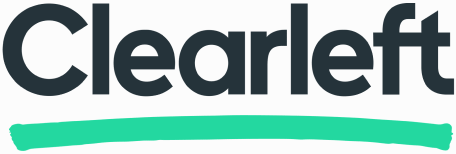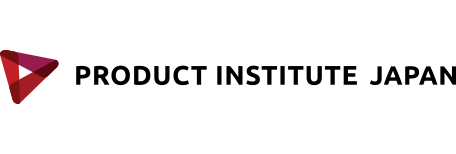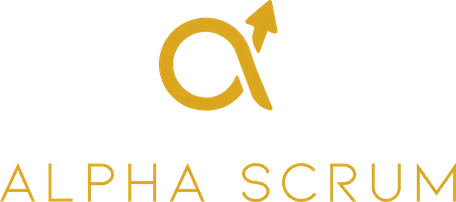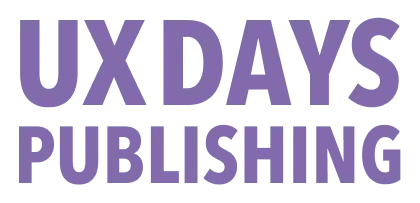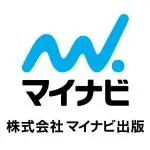WORKSHOP
-3.17
Sketching & Visual Thinking
The world is a complex place full interesting problems waiting to be solved. No matter if big or small, personal or business related, tactical or strategic, we often try to solve these problems with language – talking and writing about what we think and what we plan to do. Language is a great tool, but it has its limitations: It’s linear, it can be quite abstract and it can hold a fair bit of ambiguity.
That’s where Visual Thinking comes in. When we visualise our thoughts, we are forced to explore what the concepts we talk about actually mean and how the different pieces of information relate to each other. It becomes possible to literally see the bigger picture, identify patterns, spot gaps and make connections.
We can use visuals to bring clarity to a wide variety of content: We can think through and communicate systems, processes, experiences, user journeys, stories, strategy or company vision. And the simplest and most immediate way to visualise something is to simply sketch it – on a white-board, a post-it or the back of napkin.
This session focuses on building fundamental sketching skills by providing you with the core principles and a practical framework for drawing anything simply and clearly. Through hands-on practice you’ll develop the skills and confidence to start adding visuals to your own thinking, conversations with colleagues, client workshops, brainstorms and meetings.
Prereqs & Preparation
- Please bring a notepad and pen
High-Impact Product Teams
Estimating the impact of a team’s work has always been one of the most difficult challenges for product managers and teams–especially teams doing operational or supporting work. How can you predict what effect a small piece of work might have on high-level goals like revenue and growth? And how can you make your team accountable for these high-level goals when so many things are outside of your control?
As companies look to become more streamlined and efficient, the need for teams to understand, estimate, and deliver impact is greater than ever. Simply put, it is no longer enough for product managers and teams to simply work on the next defensible feature, or to work on anything that doesn’t have clear and understandable for the business.
asIn this workshop, product leader, consultant, and author of Product Management in Practice Matt LeMay provides hands-on practice making connections between the work being done and the impact of that work. Whether you work in company leadership, UX, design, or product management, you’ll walk away knowing how to ask, and answer, the most important question for product teams: “What’s the potential business impact of this work?”
- Why the success or failure of a product team depends on their ability to understand and articulate impact
- How to set specific high-level impact goals for your team based on your company’s business model
- How to visualize and systematize user needs and behaviors with business impact
- How to estimate the best-case and worst-case impact of a given piece of work
- How to create a regular cadence for reevaluating work in progress against high-level goals
Shape your future self
Join Jason Mesut as he guides you through a series of exercises to help you understand yourself better and direct your focus and development in line with what you want over the coming years.
Through a series of visual frameworks, you will reflect on your career and self, define your unique profile and focus your future path.
You will map, position and profile yourself in ways that you may not have considered before. This will allow you to reflect on what you're good at, what you enjoy, and where you want to develop.
What you learn
Attendees can learn the importance of self reflection. How to use visual frameworks to do that. And will actually do exercises to understand their past experiences, current profile and develop future representations of themselves they can work towards.
Boosting Web Performance in 2024
With HTTP/3, Service Workers, Jamstack, PWA, TypeScript, Web Assembly, AVIF, Qwik, Variable Fonts, CSS Container Queries and cascade layers, client hints, resource hints and early hints and CSS subgrid, we all are still trying to figure out just the right strategy for building websites and apps efficiently. How do we do that, and how do we achieve it within a reasonable amount of time?
What’s the state of CSS and JavaScript today? What are some of the exciting new technologies that have landed in browsers recently? How do we architect a flexible and maintainable design system? And where would we even start refactoring and re-organizing our legacy code base, or move to ES Modules in production, or use Web workers or Webassembly? Oh my, in the workshop, we’ll cover it all.
What you will Learn:
- Front-end accessibility 2024, with common techniques, strategies and tooling, especially for single-page-applications
- State of CSS in 2024 (CSS Grid + Cascade Layers + Custom Properties + Subgrid)
- State of JavaScript 2024, ES modules, progressive/partial (re)hydration, bundlers, tooling and how to manage performance bottlenecks for single-page-applications
- State of Web Performance 2024, with a roadmap for dealing with CSS, JavaScript, media, fonts, 3rd-party scripts, and critical CSS/JS
- Image and video optimization, techniques, tooling and formats (AVIF, AV1)
- Bulletproof web font loading, with strategies and techniques, self-hosting and CDNs
- How to organize, write and maintain CSS, incl. BEM, Tailwind, ITCSS, CUBE CSS, and how to deal with specificity wars, leaking styles and global scope
- CSS Custom Properties cascade, how to use and build with it
- How to manage critical CSS/JS to optimize delivery to minimize reflows
- Localization and internationalization
- SSR + CSR, and how to navigate the space, with resumability, Qwik and Jamstack, prerendering and static rendering, static site generators and where and how they fit
- Service Workers, setting up a strategy for better caching and better performance
- Refactoring and debugging strategies
- State of HTML email, with new strategies for building cross-email client emails
- GDPR and privacy legislation, with implications for web developers
- Maintenance issues and dealing with legacy browsers
- Component-based workflow and tooling
- Common front-end challenges and solutions and important new challenges and opportunities to keep in mind
New Techniques for Design for AI
AI innovations have spread across most aspects of people’s lives. Spam filters block messages no one wants, ride-sharing services predict service demand and dynamically adjust pricing, entertainment and retail services recommend desired items and content, bots and robots automate tedious and dangerous work, and intelligent systems help forecast the future, from this week’s weather to the number of sweaters a company will sell to how bad traffic might be. Recent advances created new capabilities, such as systems that detect cancer better than doctors, AI players that beat grandmasters, driverless road and aerial vehicles, and content generation systems that open a world of possibility and raise red flags around ethics and unintended harm.
The success of AI makes it feel like this technology is ripe for innovation. However, today, almost 90% of AI initiatives fail. In addition, innovation teams often fail to recognize low-hanging fruit, situations where a little simple AI would add real customer value. Current technical innovation approaches don’t work well when applied to AI. The HCI research community has been working on how to improve the process from brainstorming to prototyping to delivery. This workshop takes some of what we’ve been teaching our students at the Human-Computer Interaction Institute at Carnegie Mellon University and adopts it for practitioners.
UX Metrics That Matter: A Guide To Design KPIs
In this workshop, you’ll learn how to show the impact of your design work. We’ll establish how to align business goals with design objectives that support user needs, and how to establish design KPIs for just that. We’ll also explore how to choose, establish and track these KPIs effectively, and how to integrate accountability and ownership for these KPIs into your design process.
We’ll make sense of OKRs, MRR, CLV, CAC, MAU, EAS, SUS, UMUX-Lite, TPI, KPI trees and the Kano model — and we’ll discover how to translate ambiguous objectives into practical design activities. Plus, we review common metrics out there and find just the right metrics toolbox for our work, as well as the right UX research methods to get statistically reliable data.
Vitaly will show you how in this workshop. You'll learn to:
- How to speak the language of the business when presenting your design ideas
- How to apply OKRs, MRR, CLV, CAC, MAU and other metrics that businesses typically care about most
- The difference between OKRs, KPIs and metrics and how to translate them into clear goals
- How to define design KPIs that focus on user needs but also respect business needs
- How to navigate the unpredictability of technical limitations and business constraints to still move confidently towards better design,
- How to build a comprehensive design KPI tree for each team and for each department,
- How to combine qualitative and quantitative insights when measuring design KPIs,
- How to establish ownership, accountability and buy-in for your design ideas,
- How to make sure that your design is heading in the right direction,
- How to collaborate with developers to drive KPIs across the entire organization,
- How to use the Top Tasks methodology, Impact/Effort matrix and Kano model to understand and prioritize user’s tasks,
- How to improve team culture with better meetings, time estimates, expectations management and collaboration, in-house and remote
- How other companies and organizations define and track design KPIs, and what we can learn from them,
- How you can define, apply and track design KPIs for your projects and for your teams.
Who This Workshop is For
This workshop is tailored for advanced UX practitioners, design leaders, product managers and UX researchers eager to learn the art of design KPIs and tackle intricate challenges in aligning design goals with business objectives.
Designing for Emotion Masterclass
Design for delight was the mantra of many teams a decade ago, but our world and the web have since changed, bubbling up a complicated range of emotions in us all. It’s time to do more than delight. Let’s take a more sophisticated approach to design to address the challenges of our times.
Learn how to design for the complex emotions of your customers using foundational principles of design and psychology guided by sound ethics. Aarron Walter, author of the best selling book Designing for Emotion, will reveal the power of personality to shape a brand and product experience and present a clear way to create powerful experiences by designing for diversity, equity, and inclusion.
Aarron will show you how the best products and services use emotional design to create powerful moments in their customer journey, and he’ll share the principles of psychology that shape emotional engagement so you can apply them to your work too.
Aarron will also share how to design for diversity and inclusion to create a sense of belonging with all your customers. Not only is it the right thing to do, it can also help you reach more people and build lasting relationships with customers.
Aaron will show you how in this workshop. You'll learn to:
- Use principles of psychology to design memorable, emotionally engaging experiences
- Use the power of research to understand the emotional experiences of your customers
- Create well designed and well timed moments in your customer journey that transform perceptions of your brand and create real business value
- Use the power of personality to shape a brand and product experience
- Create powerful experiences by designing for diversity, equity, and inclusion
- Talk to executives and partners outside the design team to communicate the value emotional design creates for a business
Who This Workshop is For
- Designers at any level who want to learn how to go beyond creating usable interfaces to create memorable, emotionally engaging experiences will find value in this workshop.
- Entrepreneurs looking to create compelling products that beat competitors by delivering a superior user experience
- Product managers/owners who want to better understand how design creates competitive advantage and value for a business
VENUE
1 Chome-6-1 Yokoami, Sumida City, Tokyo 130-0015
TICKETS
Early Bird Discount will be from 〜2/20.
WORKSHOP TICKET
80,000yen(consumption tax will be applied)
Price(exclude tax)
- Price
- Groupe Discount
- Early Bird:-5,000yen/person
- Total
- Each Ticket
6 tickets 8,000yen off
480,000- −48,000
- −30,000
- 402,000
- 67,000
5 tickets 7,000yen off
400,000- −35,000
- −25,000
- 340,000
- 68,000
4 tickets 6,000yen off
320,000- −24,000
- −20,000
- 276,000
- 69,000
3 tickets 5,000yen off
240,000- −15,000
- −15,000
- 210,000
- 70,000
2 tickets 4,000yen off
160,000- −8,000
- −10,000
- 142,000
- 71,000
1 ticket
80,000- 0
- −5,000
- 80,000
- 75,000






